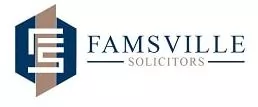INTRODUCTION
The need to keep up with technological advancement in the digital economy and global trends underpins the enactment of the Copyright Act, 2022 ("the Act"). The upward trajectory of the rate at which creative works are recognized as highly valuable possessions gave rise to the urgency to prevent unauthorized persons from reaping where they have not sown.
The Act seeks to protect the rights of authors, ensure just rewards and recognition for their intellectual efforts, provide appropriate limitations and exceptions, guarantee access to creative works, facilitate Nigeria's compliance with obligations arising from relevant international copyright treaties and conventions, and enhance the capacity of the Nigerian Copyright Commission ("the Commission") for effective regulation administration.
This article examines the innovations and implications introduced by the Act.
SIGNIFICANT INNOVATIONS INTRODUCED BY THE COPYRIGHT ACT, 2022
Protection of Audio-visual Works
The Act expanded the scope of works eligible for copyright to include audio-visual works.1 Audio-visual works are defined to mean "the aggregate of a series of related visual images with or without sound which is capable of being shown as a moving picture employing a mechanical, electronic or other device and irrespective of the nature of the material on which the visual images and sounds are carried and includes the soundtrack, but does not include a broadcast."2
Section 11 of the Act vests exclusive copyright in the owner of an audio-visual work. The section further provides to the effect that the consent of the owner of an audio-visual work must be obtained before it is reproduced, broadcasted or distributed to the public for commercial purposes through sale or other transfer of ownership, making an audio-visual work available to the public, by wire or wireless means, in such a way that it is accessible to members of the public from a place and at a time independently chosen by them.
The Act further provides for broadcasting of works incorporated in audio-visual works. Thus, where the owner of the copyright in a literary, musical or artistic work authorises a person to incorporate the works in an audio-visual work, and a broadcasting organisation broadcasts the work with the authorization of the owner of the copyright in the audio-visual work, in the absence of any express agreement on the contrary, the owner of the literary, musical or artistic work incorporated in the audio-visual work will be deemed to have granted consent for the broadcasting of the work.3 However, the owner of the right to broadcast the work is entitled to fair compensation to be agreed upon by the parties or as prescribed by the Commission where there is none.4
Alienability of Author's Moral Right
Moral rights protect the relationship between the author and his work, the reputation, and the honour of the author. Under the Copyright Act, 2004, moral rights subsist and remain intransmissible even after the death of the author in whom the moral right is vested. However, Section 14 (3) of the Act provides that upon the author's death, his moral rights may be transmissible by testamentary disposition or by operation of law. The moral rights conferred on an Author exist for the duration of the copyright in the work.
Special Exceptions for Blind and Visually Impaired or Print Disabled Persons
The Act empowers an authorized entity to, without the permission of the owner of the copyright in work, make or procure an accessible format copy of a work or subject matter to beneficiary persons.5 The beneficiary persons are defined by the Act to be persons, regardless of other disabilities, who are blind, visually impaired, or have a perceptual reading disability and cannot read printed works.6 Authorized entity recognized by the Act includes an entity recognized by the government or receiving financial support from the government to provide education, instructional training, adaptive reading, or information access to beneficiary persons, government institution, or non-profit organization that provides education or instructional training.7
It is worth noting that the provision typically sets certain conditions and safeguards to balance the rights of copyright owners with the needs of individuals with disabilities. These conditions may include limitations on the distribution or use of accessible format copies, ensuring that they are solely provided to the intended beneficiary persons and not exploited for unauthorized purposes.
Protection of Folklore Expressions
Folklore means a group-oriented and tradition-based creation of groups or individuals reflecting the expectation of the community as an adequate expression of its cultural and social identity, its standards and values as transmitted orally, by imitation, or by other means, including folklore, folk poetry, and folk riddles; folk songs and instrumental folk music; folk dances and folk plays; and productions of folk arts in particular, drawings, paintings, carvings; sculptures, pottery, terracotta, mosaic, woodwork, metal ware, jewellery, handicrafts, costumes, and indigenous textiles.
Section 74 (1) of the Act provides for the protection of these expressions of folklore against reproduction, communication to the public by performance, broadcasting, distribution by cable or other means, and adaptations, translations, and other transformations, when such expressions are made either for commercial purposes or outside their traditional or customary context.
The requisite consent from relevant indigineous communities concerned and/or the Commission must be obtained before such folklore expressions can be commercialised. Failure to do so attracts criminal liability under the Act, and the person would be liable to the Commission in damages, injunctions, and other remedies, in the circumstances.8
Protection of Performers' Rights
Performers rights are the exclusive legal rights performers have with their performances which may be dramatic, musical, or the reading and recitation of literary act or any similar presentation, which may be a live performance given by one or more individuals. The right encapsulates the performing, recording, broadcasting, reproduction, and adaptation of their performance for a period of fifty (50) years, from the end of the year their first performance(s) took place. A performer under the Act enjoys an exclusive right to control with his performance the fixation of his unfixed performance, reproduction of a fixation of his performance in any manner or form and broadcasting of his unfixed performance to the public, make available to the public fixed performances by wire or wireless means in a way that members of the public may access them from a place or at a time individually chosen by them, renting or lending to the public or public lending of a fixation.9
Section 67 of the Act provides for collective performances to the effect that where several performers as a group take part in the same performance, if consent is given by any person in charge of the group and any payment for the use of the performance may unless otherwise stipulated, be made to such person and, subject to any contract between them, be divided equally among all the performers.
Notably' the performer enjoys moral rights under the Act, which shall be transmissible upon his death either by testamentary disposition or by operation of law.10
Copyright Infringement
The Act expressly prohibits infringement of copyright. More acts constituting infringement of copyright were introduced such as;
- The making of a copyrighted work available to the public or communication of a copyrighted work to the public via wire, wireless or online means without the consent of the owner and for commercial purposes;
- Communicating to the public or making a work available to the public by wire or wireless means in such a way that members of the public can access the work from a place and at a time individually chosen by them for commercial purposes without the consent of the owner of the work in which copyright subsists;11
- Refusing or omitting to pay, upon demand, any royalty under a right of remuneration or agreement; and;
- Aiding or procuring another person to commit an act which amounts to an infringement under the Act.12
The Act also provides for prohibition of online infringement. Online infringement involves making of a copyrighted work available to the public or communicating a copyrighted work to the public via wire, wireless or online means without the owner's consent and for commercial purposes that a person is guilty of an offence.
The Act empowers the owners of copyrighted works to issue a notice of the infringement to the relevant Service Providers, requesting the service provider to take down or disable access to any content that infringes upon their copyright.13 The Commission may also directly or with the assistance of any other person block or disable access to any content, link, or website hosted on a system or network which it reasonably believes may cause copyright infringement.14
An owner of the copyright or other subject matter under the Act or his agent may apply to the court for an order to the Service Provider to identify the alleged infringer.15
Fair Dealing
The Act introduced "fair dealing" as an exemption from copyright.16 Although the Act failed to define "fair dealing", the "four-factor test" from the US "fair use" clause has been adopted to assist Nigerian courts when determining whether an unauthorized use of a copyrighted work qualifies as "fair dealing". The factors to be considered include the purpose and character of its usage; nature of the work; amount and sustainability of the portion used in the work as a whole, amongst others.17
CONCLUSION
The Act is a significant advancement in addressing the threats posed by technological progress. The Act attempts to strike a balance between the public interest, right to information, and intellectual creations on the one hand and the rights of the creators to be rewarded for their creativity on the other hand. It recognizes the importance of fostering innovation and creativity while safeguarding creators' rights.
Despite these commendable innovations of the Act, it is crucial to recognize that the Act's effectiveness relies heavily on public awareness and understanding and educational initiatives to inform the public about copyright, its significance, and the consequences of copyright infringement. In other words, by fostering a deeper understanding of copyright, its benefits, and its limitations, society can ensure a fair balance between the rights of creators and the public's access to information and creative expression.
Footnotes
1. Section 2 of the Act.
2. Section 108 (1) of the Act.
3. Section 16 (1) of the Act.
4. Section 16 (2) and (3) of the Act.
5. Section 26 of the Act.
6. Section 26 (7) (d) of the Act.
7. Section 26 (7) (c) of the Act.
8. Section 76 and 75 of the Act.
9. Section 63 of the Act.
10. Section 66 of the Act.
11. Section 44(7) of the Act.
12. Section 45 of the Act.
13. Section 54 (1) of the Act.
14. Section 61 of the Act.
15. Section 60 of the Act.
16. Section 20 of the Act.
17. Ibid.
The content of this article is intended to provide a general guide to the subject matter. Specialist advice should be sought about your specific circumstances.



